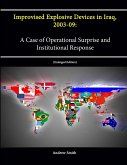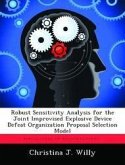Abstract Explosive detection sensor micro unmanned aerial vehicles (UAVs) equipped to identify the presence of improvised explosive devices (IEDs) and communicate their locations to commanders will significantly decrease military and civilian casualties in an unconventional warfare environment of 2030. The forecasting methods used for this paper are environmental scanning and genius. The Department of Homeland Security is encouraging research in Low Vapor Pressure Chemical Detection System (LVPCDS) programs to develop, field-test, and transition systems required to effectively detect high explosive residues and toxic low vapor pressure compounds. The LVPCDS program will assist DHSs' goals of developing enhancements to existing detection components and systems, developing new components and systems, as well as creating next generation systems. Proposed short range systems will be fully autonomous, portable and able to rapidly detect low vapor pressure chemicals from 3 meters or less without contacting the contaminated surface. ICx Nomadics Inc and GE have both demonstrated with their differing technologies that TNT can be detected in the vapor phase from a standoff distance of between 1 to 3 meters using sensors with sensitivity in the parts per trillion ranges.








